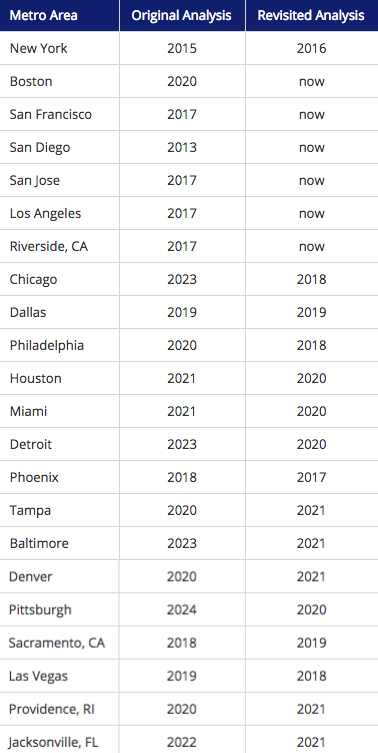For people living in six major US cities, the cost of installing and running rooftop solar panels is now the same price or cheaper than buying electricity from the grid, according to a new report - even without the help of government subsidies.
While experts have been predicting that the majority of the country will reach 'solar parity' - the point at which rooftop solar is as cheap or more affordable than grid electricity - by 2021, a new review by the Institute for Local Self-Reliance (ILSR) shows that many cities are already a lot closer than imagined.
The new review shows that for the 30 million people living in the below cities, grid electricity is no longer more affordable than renewable solar power. And that's not to mention the benefits to the environment. The cities now at solar parity are:
- Boston
- San Francisco
- San Diego
- San Jose
- Los Angeles
- Riverside
The review looked at data released by the North Carolina Clean Energy Technology Centre earlier this year, which made headlines after stating that 42 cities in the US had already reached solar parity. In fact, the report even stated that: "In 46 of America's 50 largest cities, a fully-financed, typically-sized solar PV system is a better investment than the stock market".
While these results were exciting, they were based on the cost of solar panels after generous government subsidies, which we can't rely on in the long-term. For solar to really be able to compete with and out-price grid electricity, we need to be able to make sure it's cheaper than the utility companies, even without help from the government.
So the ILSR team took the same data and looked at how the numbers would change when taking government subsidies out of the picture. And although the number of solar parity cities dropped down to six from 42, it's still a lot higher than the original two cities the ILSR had predicted back in 2012.
"That's one-third more people living with solar at parity with utility electricity prices than in our original analysis, when we calculated that 2015 would bring parity to just two metro areas, totalling 22 million people," writes John Farrell in the ILSR review.
The review specifically compared solar installed at US$3.50 per Watt - with no incentives - to the city's average grid electricity rate. They also estimated that the cost of solar would decrease by 7 percent per year, while the price of grid electricity rises by 2 percent per year.
They've now used their new data to update their original 2012 predictions, and now project that by 2017, more than 71 million Americans will be at parity. You can see how your city compares below:

"What's not captured in the table above … is that the acceleration of grid parity seems to be concentrated in the largest metropolitan areas, pushing up the population at parity despite nearly as many cities losing ground toward parity as gained between our new and original analysis," writes Farrell.
With other promising development being made towards solar parity - and in some cases, total dependency on renewable energy - in other parts of the US and the rest of the world, we're feeling pretty positive about the future.
